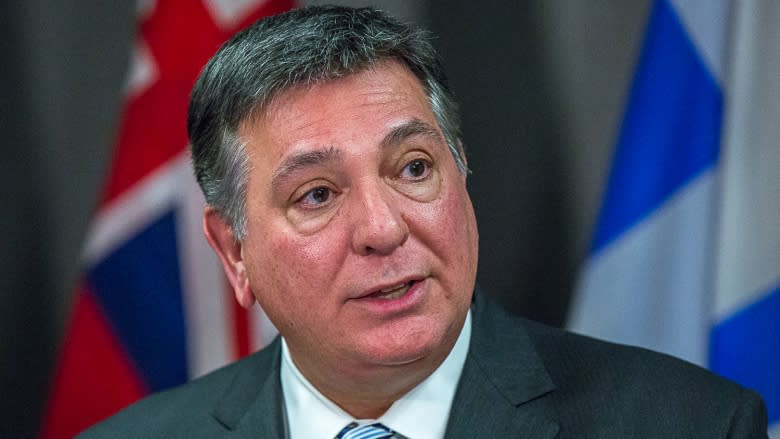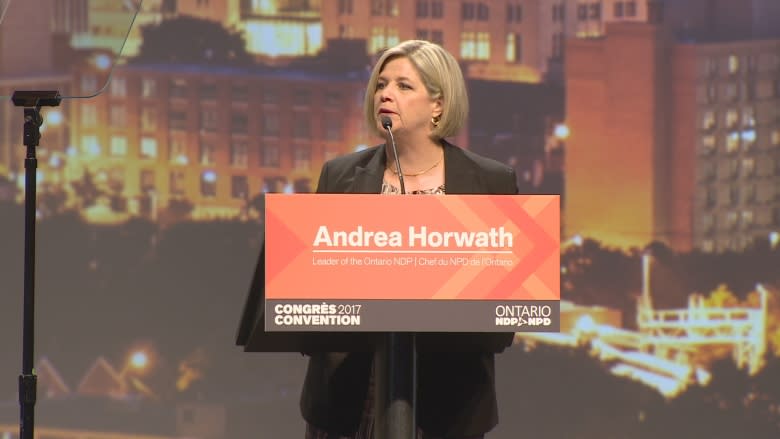Seniors not forgotten in Ontario budget, minister says
Ontario Finance Minister Charles Sousa defended the spring budget on Friday, saying the province is providing for seniors as well as youth, despite its announcement of free prescription drugs for people 24 and under.
Sousa told Metro Morning that the $465 million pharmacare plan announced Thursday, which would cover prescription medications to treat most acute and common chronic conditions for children and young adults, does not shortchange seniors in any way.
"We want our seniors to live with dignity and respect and comfortably, obviously," Sousa said by telephone.
"I'm proud that, we as a government, we're investing $11.5 billion more in health care generally throughout the system. Much of that will support seniors."
The finance minister said the budget contains several measures specifically designed to help seniors.
According to budget documents, the province will spend $100 million over three years to help people with dementia. It will spend $58 million more for long-term care homes, which is a two per cent increase. It will also create a public transit tax credit for seniors. And it will increase the food allowance for residents of long-term care homes by six per cent.
When asked about the pharmacare plan age limit, Sousa said the province chose to limit prescription drug coverage for young people at 24 because that is the age when many young people enter the full-time work force.
"Many of them may be on contract up to until that point. We felt it was a good start. At that age, we're covering all of our young people," he said.
Under the pharmacare plan, which starts in January 2018, the government would pay for 4,400 medicines currently covered under the Ontario Drug Benefit program. That program provides prescription drug coverage to more than 2.3 million seniors and about 900,000 people receiving social assistance.
Sousa said the provincial government has been working on the youth pharmacare plan for months. He said the Liberals would like the federal government and other provinces to follow suit.
"We've been working on this for some time. It was already in the budget, it was already at the printer, when the NDP came up with the idea on Sunday," he said.
NDP plan to cover everybody
NDP Leader Andrea Horwath responded to the Liberal pharmacare plan saying that 2.2 million Ontario residents don't have a prescription drug plan and need one.
She said the NDP's plan, unveiled at the party's convention in Toronto last weekend, would cover people of all ages and include 125 different types of prescription medication.
"What our plan does is cover everybody who needs it and it covers the most often prescribed medications for the most often presenting illnesses," she told Metro Morning on Friday.
"It would mean people will have better levels of health care."
Horwath said the NDP plan provides for Ontario residents, including seniors, who need the coverage.
For his part, MPP Victor Fedeli, Progressive Conservative finance critic, said the provincial Liberals should have consolidated drug plans in Ontario, which has six drug plans already, not including the Trillium Drug Program, which is for people who spend three per cent of more of after tax household income on prescription drugs.
The new youth pharmacare plan means there are now eight plans, he said.
"We absolutely deserve the best health care possible in Ontario, whether it's the doctor's office, the hospital, getting the drugs," he told Metro Morning.
Aging population to drive up costs
"As usual, it's ready, fire, aim. They announce something without thinking it through. You need to have a plan that consolidates these eight different plans and provides the best coverage possible. They are not fixing the holes in the drug plans that we currently have."
Fedeli said the plan means children of millionaires will have their prescription drugs covered.
The Conference Board of Canada, in a budget analysis, noted the Ontario government will increase its spending, including on health care.
"Beyond 2017–18, the province will still need to keep a tight rein on spending, especially as population aging drives up costs," it says.



